Gardening Answers
Do you have a gardening question that is not listed here? Send an email to food.hero@oregonstate.edu. Or, Master Gardeners can help!
If you are in Oregon visit this Ask Master Gardeners page.
If you are outside of Oregon, contact your local Extension office, or you can submit your question online.
Should I throw away my seeds on their expiration date?
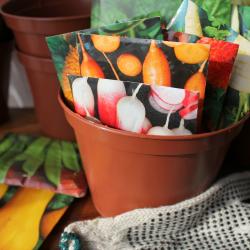
Should I throw away my seeds on their expiration date?
Seeds in fact do not have an "expiration date", rather it is a sell-by-day, just like food. The dates on seed packets are guidelines to help you figure out if your seeds are getting old, but it does not mean you have to throw them away if they are past their sell-by-date.
Every plant is different. Some, like lettuce, last longer, and others, like onion, go bad very quickly. Still, most seeds remain good for about 2 to 3 years.
Practice good seed saving techniques to extend the life of your seed.
Also, seeds from past growing seasons work great for growing microgreens, which are plant sprouts that have been allowed to develop their first leaves. If you are unsure if old seeds will grow, test some of them out as microgreens. Learn how to grow microgreens at this link: https://foodhero.org/microgreens-garden-tips-and-how-grow.
Do cucumbers grown from "pickling cucumber seeds" have to be pickled?
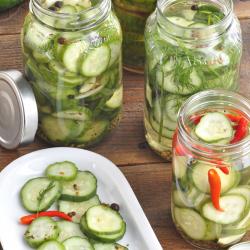
Do cucumbers grown from "pickling cucumber seeds" have to be pickled?
All types of cucumbers are good to eat fresh and all can be pickled. Pickling cucumbers are well-suited for pickling (before they get too big) because they have fewer seeds and are a bit firmer than slicing cucumbers. But most people don’t know the difference. You can pickle any cucumber you grow using our Food Hero Recipe: Refrigerator Pickled Cucumbers.
Also see our Cucumber Food Hero Monthly that features recipes and cooking and shopping tips in a magazine format.
Where should I plant nasturtiums?
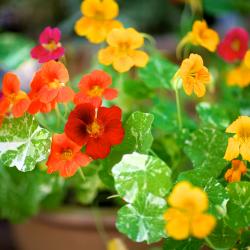
Where should I plant nasturtiums?
Flowers can help vegetables grow. Nasturtiums are tasty flowers you can eat (edible). They're also great for dealing with garden pests. Plant them several feet away from your fruit and vegetable plants (especially brassicas like broccoli, Brussels sprouts, cauliflower, collard greens, kohlrabi) and they will attract aphids (bugs that damage crops) to a different spot!
Are there flowers I should be careful with in my garden?
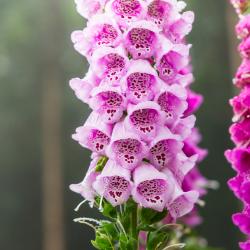
Are there flowers I should be careful with in my garden?
Please be aware that some flowering plants should not be eaten by humans, pets or livestock. These include Morning Glory, Foxglove, and the Sweet pea flower plant (not the pea producing plant!). Although these flowers are beautiful and harmless to have in your flower garden, please keep them out of feeding areas for animals.
Planting Tip
Plant your morning glories or other non-edible flowers in a container to keep them out of reach and to help reduce the possibility of natural re-seeding.
What is germination?
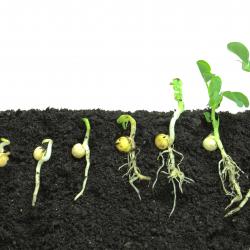
How do I grow plants from seeds?
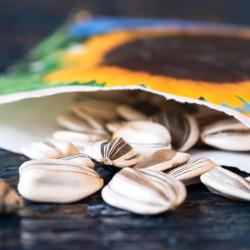
How do I grow plants from seeds?
Try these twelve tips!
- Before planting, water your soil well. A spray bottle works great. Seeds will not germinate (begin to grow) in dry soil.
- It’s best to start seeds in a container that is at least 3 to 4 inches deep to allow for more developed roots.
- Try pre-soaking large seeds (like sunflowers, nasturtiums, peas, beans and corn) overnight before you plant them.
- Most of the time plant just one seed in the hole you put in the soil. If your seeds are older, they may start to lose their viability (their chance of germinating and growing a plant) so add in an extra seed. If they all grow, that is okay. Wait until they are a few inches tall, then thin them.
- Keep your seeds warm and moist after planting. Keep the containers on top of the refrigerator so they don’t get cold. You can cover them or leave them uncovered. If you cover them, use a cover that will hold in moisture, like a plate. Check them daily to see if the soil is still moist. If not, water gently but fully. Putting your seed containers on a source of heat or leaving them uncovered will dry the soil out faster.
- Seedlings (baby plants) should never dry out. Water them lightly twice a day with room-temperature or cool water. Once the plant is as tall as your hand, water them only when the soil is dry to the touch.
- Move your plants to a light source once leaves start to show.
- Sometimes two or more seedlings are too close together. Crowded seedlings do not grow well because they compete for resources. Gently pinch off the smaller seedling(s) to thin them and leave the healthiest in place.
- Seedlings cannot survive frost. So before planting them outside, search online for the date of the last frost in your area. You can also ask an OSU-Extension Master Gardener if it’s safe to move your seedlings outside (https://beav.es/JxN).
- Bring your seedlings outside a few hours a day before you transplant (move) them outside. Each day increase the time they spend outside. “Hardening” your baby plants will get them used to being outside. In this process, you expose young plants to outside temperatures, wind, sun, and rainfall. Some plants need hardening more than others, but it’s helpful for all plants. Start on days with nice weather and increase the time outside from day to day. After about a week, your plants will be ready to be transplanted.
- Read the back of your seed packets to find out how many days it takes each type to germinate. In 1 to 2 weeks after planting, most seed types start growing into plants!
- Wait until your plants are at least 4 to 6 inches tall before transplanting them outside. They will have more developed roots, which will help them survive the transplant.
PDF Version: https://foodhero.org/seed-starting.


